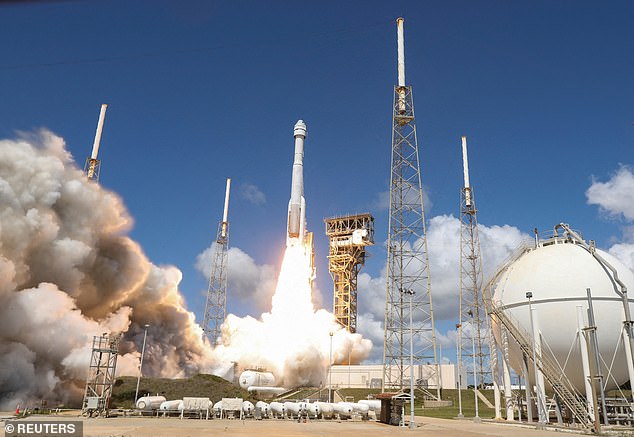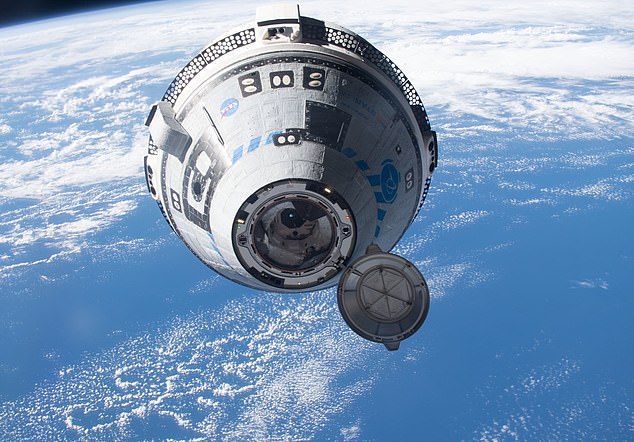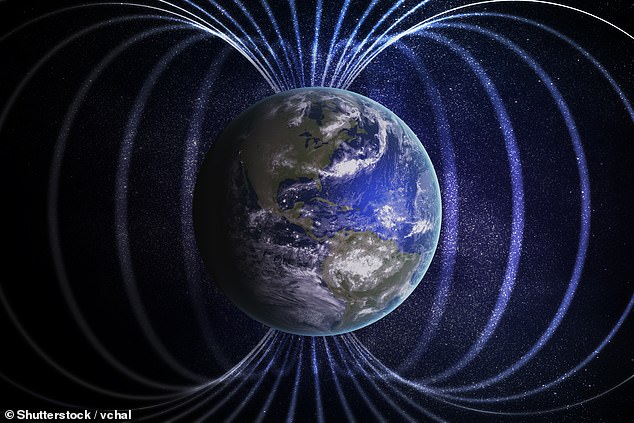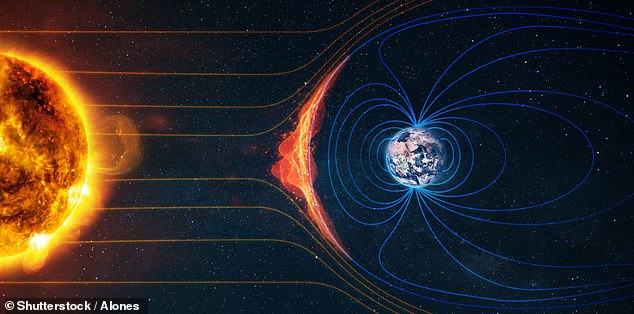The terrifying amount of radiation NASA’s stranded astronauts were exposed to due to Boeing’s malfunctioning spacecraft
Two NASA astronauts will be exposed to intense radiation for months after Boeing’s Starliner spacecraft stranded them on the International Space Station.
Astronauts Sunita Williams and Barry Wilmore have been trapped on the ISS for three months, putting them at risk of receiving approximately 40 mSv to 80 mSv of radiation, which is about equivalent to 120 to 240 chest X-rays.
They will not return to Earth until February 2025 at the earliest, and by then they will have spent at least eight months in space, risking exposure to radiation equivalent to 310 to 630 chest X-rays.
NASA research shows that such radiation doses increase the risk of cancer, cardiovascular disease and damage to the central nervous system in the long term.
Stranded NASA astronauts Barry Wilmore (left) and Sunita Williams (right) will be exposed to intense radiation during their long-term stay on the ISS.
“Space is a truly inhospitable place to live – there is no breathable air, microgravity wastes away your bones and muscles, and you are exposed to elevated doses of radiation in the form of high-energy charged particles,” space plasma physicist Martin Archer wrote in an article for The conversation.
“These substances can damage the cells in your body by breaking down the atoms and molecules that make them up,” he continued.
According to NASA, astronauts who spend six months on the ISS are exposed to radiation ranging from 80 to 160 millisieverts.
Millisievert (mSv) is a unit of measurement for the amount of radiation absorbed by the human body. One mSv of spatial radiation is approximately equivalent to receiving three chest X-rays.
According to NASA, Williams and Wilmore already had a cumulative average risk of radiation exposure of about 40 mSv to 80 mSv.
“When their bodies are exposed to multiple types of radiation, they are at risk of cancer, damage to the central nervous system, bone loss and certain cardiovascular diseases,” NASA said.
Space radiation can increase the risk of cancer by damaging cellular DNA.
Cells will attempt to repair this damage, and sometimes they succeed. However, if the DNA is repaired incorrectly, it can lead to genetic mutations that can eventually lead to cancer.
Radiation can also alter the cardiovascular system by damaging the heart, hardening and narrowing arteries, and destroying cells in the walls of blood vessels. This damage can eventually lead to heart disease.
It also affects the brain. Exposure to radiation can impair neurogenesis, the process of generating new brain cells. This can lead to cognitive impairment and memory deficits.
The ISS is shielded to reduce the amount of space radiation astronauts are exposed to, but crews According to Archer’s calculations, the planets are still exposed to about 365 times more radiation than we are here on Earth.
People on Earth are exposed to an average of 2 mSv of background radiation per year.

Starliner faced numerous technical issues prior to the mission, even on the day of launch

Thruster failures and helium leaks on the Starliner prompted NASA and Boeing to keep the crew in orbit longer, fearing a return trip with the spacecraft could end in disaster.
Most of the health risks associated with exposure to radiation in space only manifest themselves over the long term.
However, astronauts are also at risk of acute radiation syndrome (ARS), a condition that occurs when a person is exposed to a high dose of radiation over a short period of time.
In severe cases it can be fatal, but no astronaut has ever died from ARS.
Williams and Wilmore won’t return to Earth until February 2025, when SpaceX’s Crew Dragon mission will bring them home.
“Butch and Suni, because they are on the ISS, are not exposed to enough radiation to seriously affect their body systems,” Bokhari said.
“But long-term exposure to higher levels of radiation than on Earth could lead to an increased risk of cancer,” she added.
Scientists also warn of an increased episodic risk from solar flares — intense bursts of high-energy radiation from the sun’s surface.
When flares occur, “there are peak risks because you have episodic waves of solar radiation and ionic radiation from deep space that come through the magnetic field, and fortunately the Earth has a strong magnetic field that blocks a lot of that,” oncologist Stanton Gerson told me. ABC News.
But, ‘if you’re on the other side of the moon, you don’t have that.’
The Sun is currently approaching solar maximum, the peak of the 11-year cycle in which the Sun is most active and solar flares occur more frequently.
It’s difficult to estimate what impact this will have on astronauts’ risk of radiation exposure, Gerson said, but it’s an additional risk factor to consider.

Earth’s magnetosphere — a system of magnetic fields — helps protect us from space radiation

The International Space Station receives some protection from the magnetosphere, but astronauts on board are still exposed to 365 times more radiation than people on Earth
Even before Starliner was launched to the ISS, the spacecraft was already experiencing technical problems, causing the mission to be delayed several times.
Even on the day of launch, Starliner experienced small helium leaks, but engineers said they were not serious enough to delay the launch again.
From there it was all downhill. By the time Starliner reached the ISS, there were more helium leaks and five of the 18 thrusters had failed.
Wilmore and Williams were able to safely board the ISS, but at a news conference on August 24, NASA officials said it would be too risky to send the astronauts home on the Starliner.
Instead, they await the arrival of SpaceX’s Dragon Capsule, which is not expected to launch to the ISS until September 24.
Astronauts on board the ISS are exposed to more radiation than we are on Earth. This is because our planet is surrounded by a system of magnetic fields, called the magnetosphere, which protects us from space radiation.
Space radiation comes in three different types: particles trapped in the Earth’s magnetic field, particles launched into space during solar flares, and galactic cosmic rays, which consist of high-energy protons and heavy ions from outside our solar system, according to NASA.
The ISS is in low Earth orbit, which means it has some protection from space radiation thanks to the planet’s magnetosphere, space physiologist Rihana Bokhari said ABC News.
“However, they are exposed to greater radiation than space probes on Earth because the ISS passes through regions of trapped radiation in its orbit,” she said.
And the mechanical shielding of a spacecraft or space station can only block this light to a limited extent.
